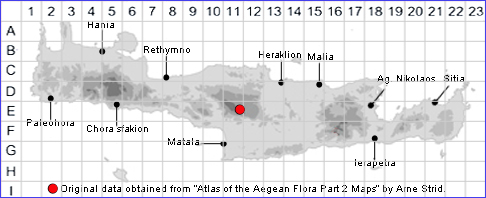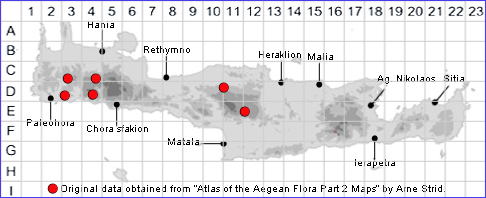CEPHALANTHERA DAMASONIUM
Including:- Cephalanthera longifolia
Family and Genus:- See- ORCHIDACEAE
Common Names:- White helleborine.
Homotypic Synonyms:- Serapias damasonium.
Meaning:- Cephalanthera (Gr) Head-anther (its position on the column).
Damasonium (L) Water plantain. A name in Pliny for Alisma.
General description:- Perennial herbaceous plant, with a glabrous rhizome.
Stem:-
1) 20-50 cm, solitary or in small clusters with 2 or 3 pale brownish basal sheaths.
Leaves:-
1) Cauline, 2-5, ovate-lanceolate, generally 4-7 cm.
Flowers:-
1) Spike, 3-12-flowered.
2) Bracts;
a) lower, leaf-like,
b) upper, successively smaller and narrower.
3) Flowers, white or cream, not opening widely.
4) Perianth-segments, 15-20 mm, ± obtuse.
5) Labellum, somewhat shorter than the other perianth segments, divided by a
constriction into a concave basal part (hypochile), and a flat distal part (epichile).
6) Spur, lacking.
Key features:-
1) Lower leaves, ovate to broadly lanceolate.
2) Lower bracts, leaf-like, exceeding the ovary.
3) Perianth segments, ± obtuse.
4) Spur, lacking.
Habitat:- Deciduous and coniferous woodland. (50-)500-1600 m.
Distribution:- Not uncommon in the mountains of mainland Greece and
Peloponnisos, southwards to Taigetos. - Widespread in Europe northwards to
Gotland; SW Asia to Caucasus and N Iran. Very rare on Crete, if indeed it exists
there.
Comment:-
The location on the map is based on a record by Robatsch (1978) from Mt
Psiloritis, where it is apparently very rare and has not been confirmed.1)
1) "Atlas of the Aegean Flora" Book1, Arne Strid 2016.
Flowering time:- Mid-May to early July
Photos by:- Maria Gerofoti
SPECIES DESCRIPTION


CEPHALANTHERA LONGIFOLIA
Homotypic Synonyms:- Click here for full list of 58
Meaning:- Longifolia (L) With long leaves.
Resembling Cephalanthera damasonium, but differering in the following
characters.
1) Leaves, longer and much narrower, lanceolate tovlinear-lanceolate, acute, ±
distichously arranged.
2) Bracts,short.
3) Flowers, white, more open and somewhat smaller.
4) Perianth segments, acute to shortly acuminate.
Habitat:- Deciduous and coniferous woodland, forest margins, sometimes
gregarious. (0-)200-1300 m.
Distribution:- Throughout mainland Greece and Peloponnisos, most of Europe
except the extreme north and most of the north-east. On Crete known only from a
few locations in the west. Very rare.
Flowering time:- Mid-Apr to late June.
Photos by:- Fotis Samaritakis
~~~~~~~~~~~~~~~~~~~~~~~~~~~~~~~~~~~~~~~~~~~~~~~~~~~~
